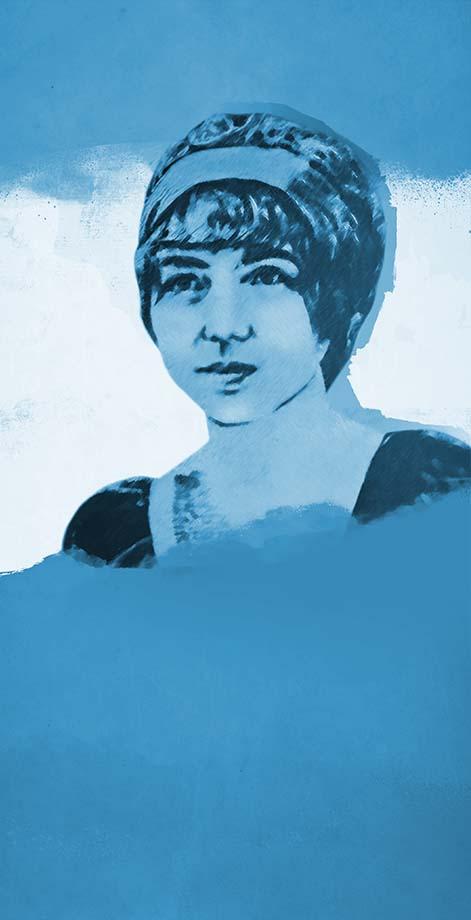
22 February 1888 (or 1890), Lodz – August 1944, KL Auschwitz-Birkenau
Miryam Ulinower was a poet who held literary salons in her apartment, which continued to take place in the Lodz ghetto, reflecting the significance of her work. In August 1944, the Nazis liquidated the ghetto deporting the detainees, including the Ulinowers, to Auschwitz-Birkenau. Most of her work perished with her.
Miryam Hirshbeyn was born in February 1888 (1889?) in Lodz to an affluent, devout Jewish family that sent her to a secular school for her early education. When her parents divorced in 1905, she spent several childhood years with her grandfather in Krzepice, a small town near Czestochowa.
Miryam started writing as a young girl, and, according to some sources, a meeting with the classical Yiddish writer Sholem Aleichem inspired her. However, she wrote her first poems in Polish, Russian, and German, gradually transitioning to Yiddish, which remained the only language in which she expressed herself.
In 1912, Myriam married the much younger Chassidic merchant Wolf Ulinower, establishing a strictly Orthodox household where Myriam wore a wig, a traditional expression of feminine modesty. Two daughters, Dina Rochl and Hinda Machla, soon followed.
During World War I, Wolf worked to help refugees, while Myriam published works in
mainstream journals such as Bejs Jakow and avant-garde ones like Ringen as well as local periodicals. In 1922, her first book of poems, Der bobes oyzer (“Grandmother’s Treasure”), appeared in Warsaw with an introduction by the known writer and critic Dovid Frishman.
Ulinower’s poems were included in the parochial schools’ curriculum, probably because of their religious content and the inherent folkloric symbolism. However, despite the first book's success, no further works materialized, even though several announcements indicated imminent new works.
She was a prominent poet whose apartment at Dzielna Street (today’s Narutowicza) attracted eminent Yiddish poets who presented their works to their peers. Chaim Leyb Fuks, Izchok Goldkorn, and Rikuda Potasz counted among them. The gatherings continued in the Lodz ghetto.
At the end of 1939, approximately 233,000 Jews lived in Lodz, one-third of the city’s population. The Lodz ghetto was one of the largest in occupied Europe and the second largest regarding the size and concentration of Polish Jews and forced laborers.
In the ghetto, Ulinower wrote only one poem, but no one ever found it. She became sick due to starvation and exhaustion. In August 1944, with the liquidation of the Lodz ghetto, the Ulinower family was deported to Auschwitz-Birkenau.She perished in the gas chamber.
In 1940-1944, the Lodz ghetto held 200,000 detainees; upon liberation, 5-7,000 people were left. Ulinower took all her original manuscripts to Auschwitz-Birkenau, but none have survived. In 2003, a collected works edition was published, with an introduction by Natalia Krynicka, a teacher, researcher and translator of Yiddish literature. Organizers of The Lodz Women's Route (Łódzki Szlak Kobiet) applied to the Municipal Council to honor the poet by naming a street in her memory. The motion has yet to be approved by the Council.
Bibliografia:
Hellerstein Kathryn, A Question of Tradition: Women Poets in Yiddish, 1586-1987, Stanford University Press 2014.
Krynicka Natalia, Miryam Ulinower, Jewish Women’s Archive,
https://jwa.org/encyclopedia/article/Ulinower-miryam (11.12.2023).
Lisek Joanna, Kol isze – głos kobiet w poezji jidysz (od XVI w. do 1939 r.), Sejny 2018.
Szymaniak Karolina, Lisek Joanna, Szwarcman-Czarnota Bella (wybór i opracowanie), Moja dzika koza. Antologia poetek jidysz, Kraków-Budapeszt-Syrakuzy 2018.